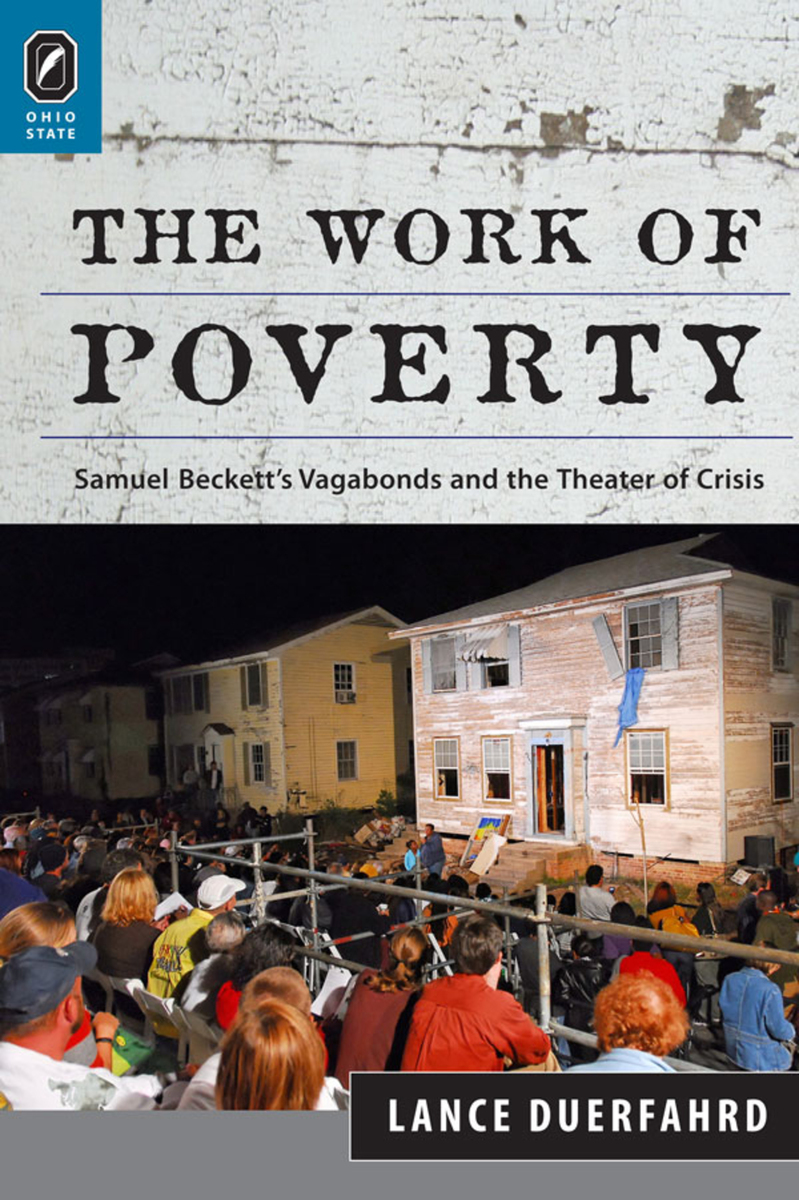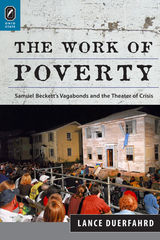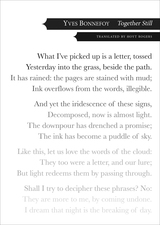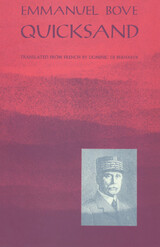The Work of Poverty: Samuel Beckett's Vagabonds and the Theater of Crisis
The Ohio State University Press, 2013
Cloth: 978-0-8142-1237-0 | eISBN: 978-0-8142-7114-8 | Paper: 978-0-8142-5425-7
Library of Congress Classification PQ2603.E378Z618 2013
Dewey Decimal Classification 842.914
Cloth: 978-0-8142-1237-0 | eISBN: 978-0-8142-7114-8 | Paper: 978-0-8142-5425-7
Library of Congress Classification PQ2603.E378Z618 2013
Dewey Decimal Classification 842.914
ABOUT THIS BOOK | AUTHOR BIOGRAPHY | REVIEWS | TOC
ABOUT THIS BOOK
How did Samuel Beckett’s Waiting for Godot come to be performed in such places as San Quentin Prison, Mississippi during the Civil Rights Movement, Sarajevo under military siege, New Orleans’s Lower Ninth Ward after Hurricane Katrina, and Zuccotti Park during the Occupy Wall Street protests? The Work of Poverty: Samuel Beckett’s Vagabonds and the Theater of Crisis studies the appeal of Godot to audiences in settings of historical crisis and suffering. Lance Duerfahrd argues that these circumstances transform the performance and the reception of the play, thereby illuminating a cathartic and political dimension of Beckett’s work that goes unseen in traditional performance contexts.
The resonance of one of the most canonical plays of the twentieth century within landscapes of disaster fulfills the aesthetic of “ultimate penury” that Beckett hones in his work. Here the subtractive and reductive dynamic of the Nobel Prize–winning author’s craft comes into clearer view, echoing with the despondent condition beyond the stage. In developing an aesthetic of penury, The Work of Poverty brings together the dispossessed characters in Godot; the derelict narrators of Beckett’s Molloy,Malone Dies, and the Unnamable; and the formal experimentation in poverty witnessed in his Endgame and Worstward Ho. Beckett forged increasingly destitute forms of theater and prose on the periphery of writing. Duerfahrd illustrates how this work speaks to our age by emphasizing characters on the periphery of society.
See other books on: 1906-1989 | Beckett, Samuel | English | Poverty | Work
See other titles from The Ohio State University Press



























